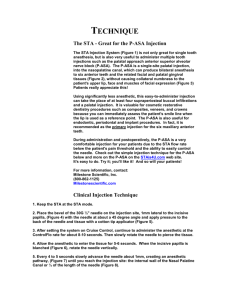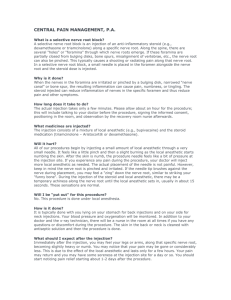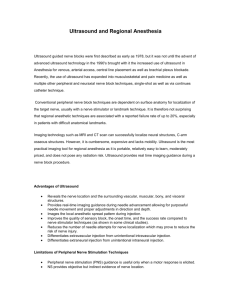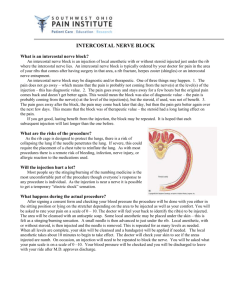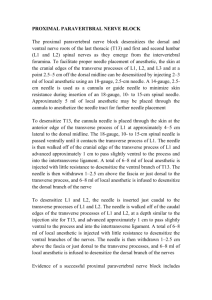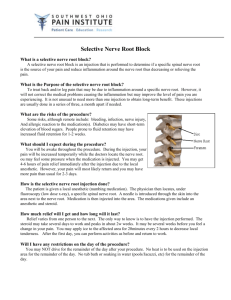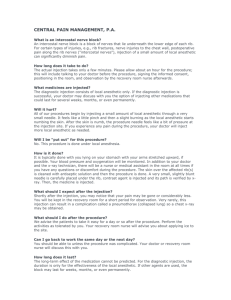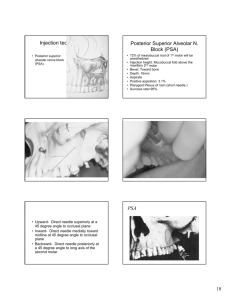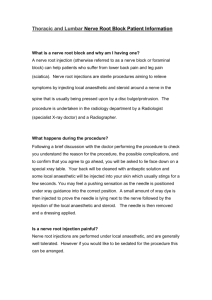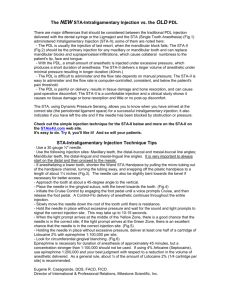Complications of nerve blocks
advertisement
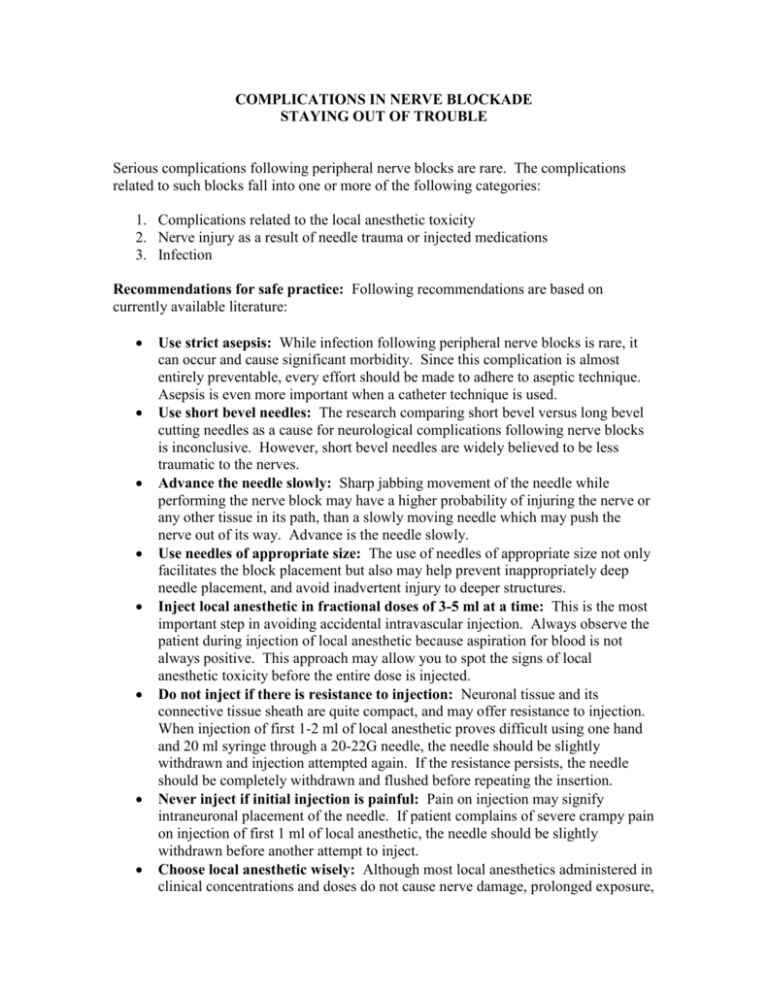
COMPLICATIONS IN NERVE BLOCKADE STAYING OUT OF TROUBLE Serious complications following peripheral nerve blocks are rare. The complications related to such blocks fall into one or more of the following categories: 1. Complications related to the local anesthetic toxicity 2. Nerve injury as a result of needle trauma or injected medications 3. Infection Recommendations for safe practice: Following recommendations are based on currently available literature: Use strict asepsis: While infection following peripheral nerve blocks is rare, it can occur and cause significant morbidity. Since this complication is almost entirely preventable, every effort should be made to adhere to aseptic technique. Asepsis is even more important when a catheter technique is used. Use short bevel needles: The research comparing short bevel versus long bevel cutting needles as a cause for neurological complications following nerve blocks is inconclusive. However, short bevel needles are widely believed to be less traumatic to the nerves. Advance the needle slowly: Sharp jabbing movement of the needle while performing the nerve block may have a higher probability of injuring the nerve or any other tissue in its path, than a slowly moving needle which may push the nerve out of its way. Advance is the needle slowly. Use needles of appropriate size: The use of needles of appropriate size not only facilitates the block placement but also may help prevent inappropriately deep needle placement, and avoid inadvertent injury to deeper structures. Inject local anesthetic in fractional doses of 3-5 ml at a time: This is the most important step in avoiding accidental intravascular injection. Always observe the patient during injection of local anesthetic because aspiration for blood is not always positive. This approach may allow you to spot the signs of local anesthetic toxicity before the entire dose is injected. Do not inject if there is resistance to injection: Neuronal tissue and its connective tissue sheath are quite compact, and may offer resistance to injection. When injection of first 1-2 ml of local anesthetic proves difficult using one hand and 20 ml syringe through a 20-22G needle, the needle should be slightly withdrawn and injection attempted again. If the resistance persists, the needle should be completely withdrawn and flushed before repeating the insertion. Never inject if initial injection is painful: Pain on injection may signify intraneuronal placement of the needle. If patient complains of severe crampy pain on injection of first 1 ml of local anesthetic, the needle should be slightly withdrawn before another attempt to inject. Choose local anesthetic wisely: Although most local anesthetics administered in clinical concentrations and doses do not cause nerve damage, prolonged exposure, high dose and/or high concentrations of local anesthetic solutions may result in permanent neurologic deficits. Addition of epinephrine may increase the neurotoxicity of local anesthetics. Use the lowest concentration of local anesthetic which will produce the desired effect. Performing blocks in anesthetized patients: The performance of regional blockade on anesthetized patients theoretically increases the risk of perioperative neurologic complications. Even though there are no formal studies looking into this issue, it is prudent to avoid doing nerve blocks in anesthetized or heavily sedated patients. Repeating nerve block after failed block: This should be uncommon, and when indicated it should be done only by those with substantial experience in the technique, using only the lowest concentration and volume of local anesthetic which would be sufficient.
